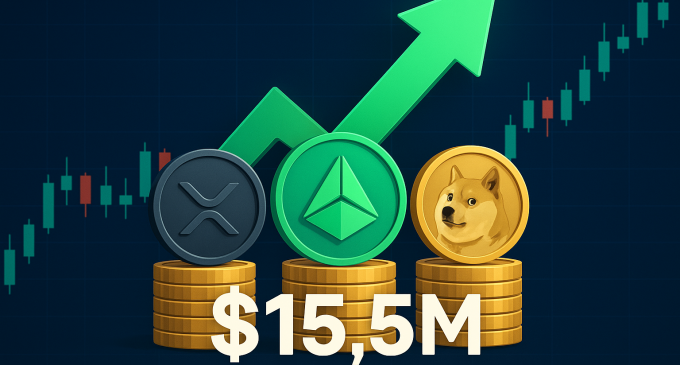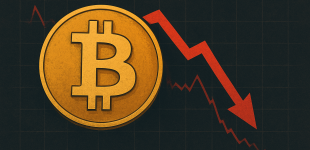
Introduction
In a rapidly evolving crypto landscape, investment trends can pivot overnight. The latest example of this is the surprising movement of capital and investor sentiment from two long-standing favorites—XRP and Dogecoin—into an emerging player in the crypto space: RTX. In just a short span of time, RTX has managed to raise over 15.5 million dollars through its initial coin offering (ICO), capturing the attention of more than 20000 new investors. This shift signals not only a vote of confidence in RTX’s project fundamentals but also a broader statement on how quickly investor behavior adapts to perceived value and innovation.
Why Are Investors Leaving XRP And Dogecoin?
The exodus from XRP and Dogecoin can be attributed to multiple factors. XRP, despite recent favorable legal decisions in its long-standing battle with the SEC, continues to struggle with volatility and regulatory overhang. Investors who were once optimistic about Ripple’s utility and legal clarity are increasingly concerned about its sluggish price performance and lingering risk of appeal from regulators.
Dogecoin, on the other hand, has lived much of its price action on hype rather than substance. Originally created as a meme coin, Dogecoin enjoyed massive price surges thanks to celebrity endorsements and viral social media campaigns. However, it has failed to evolve beyond its meme status into a utility-driven token. As the broader market matures, more investors are demanding tokens that offer real-world use cases, technical innovation, and long-term viability. RTX appears to offer exactly that.
The Emergence Of RTX And Its Unique Appeal
RTX entered the market with a strong narrative around blockchain scalability and AI integration, aiming to provide decentralized infrastructure solutions that surpass limitations of current Layer 1 and Layer 2 protocols. From day one, its whitepaper showcased a clear roadmap and a solid development strategy, immediately setting it apart from the dozens of speculative ICOs that flood the market weekly.
Unlike many competitors that lean heavily on marketing and superficial hype, RTX has concentrated efforts on building a secure, efficient, and developer-friendly platform. Its focus on real-time data integration, smart contract adaptability, and interoperability with other chains has given it an edge in attracting technically-savvy backers and seasoned crypto investors.
What Makes RTX’s ICO Stand Out?
The RTX ICO structure is transparent and investor-friendly. Its phased token release system is designed to reduce sudden volatility, and its lock-up periods are engineered to discourage pump-and-dump behavior. Moreover, early investors are granted not just token allocations but also voting rights in RTX’s decentralized governance model.
This combination of investor incentives and strong technical foundations explains the surge of more than 20000 contributors in such a short time. The ICO also emphasizes community engagement, regular AMAs with developers, and live updates about development milestones—practices that are often missing in poorly managed token launches.
The Role Of Market Sentiment And Timing
The surge in RTX’s ICO success cannot be discussed without acknowledging the role of market sentiment. The crypto community has grown weary of projects that overpromise and underdeliver. With several failed ICOs and stalled blockchain initiatives behind them, investors are more diligent in vetting new opportunities. RTX entered the scene at a time when many investors were re-evaluating their portfolios and looking for tokens with long-term potential.
Furthermore, macroeconomic conditions also played a role. As global markets show signs of loosening monetary policies, risk assets like cryptocurrencies are again gaining appeal. Investors with liquidity on hand are redirecting capital from stagnant tokens like XRP and Dogecoin into high-growth opportunities like RTX.
Influencers And Whales Shift Focus
One of the most telling indicators of RTX’s growing influence is the behavior of crypto whales and key market influencers. Blockchain analytics show several large XRP and Dogecoin wallets decreasing their holdings and participating in RTX’s ICO. These aren’t just retail investors with a few hundred dollars to invest—they are sophisticated players who study on-chain data, market cycles, and tokenomics before making a move.
This migration has further amplified confidence in RTX. As news of whale activity spread, retail investors quickly followed suit, creating a network effect that continues to expand RTX’s user base and funding levels. Additionally, several prominent crypto influencers have praised RTX for its clear vision and active development community.
The Potential Risks And Considerations
While the momentum around RTX is undeniable, it’s important for investors to assess the risks associated with any new ICO. Despite its well-articulated goals, RTX is still in its early stages. The actual product is in development, and widespread adoption is yet to be seen. Like all ICOs, there’s a possibility of delays, technical hiccups, or shifting priorities as the project matures.
Also, while the exit of whales from XRP and Dogecoin might signal confidence in RTX, it’s also a reminder of how quickly market sentiment can change. The same whales and influencers who are investing now may pivot away if RTX’s milestones are not met on time or if more attractive opportunities emerge elsewhere.
Implications For The Broader Crypto Market
RTX’s successful ICO is more than just a case study in capital migration. It reflects broader shifts in the crypto ecosystem. As the market matures, the community is becoming more selective and less tolerant of projects that lack utility. Retail investors, once prone to impulsive decisions based on hype, are now paying closer attention to documentation, governance structures, and developer transparency.
This could signal the beginning of a new ICO era—one dominated not by memes and marketing gimmicks, but by robust technology, long-term planning, and community-driven value creation.
Future Outlook For RTX
With the current momentum, RTX is expected to hit higher funding targets in the coming weeks. Post-ICO, the team plans to release a public beta of its platform, with strategic partnerships already being formed with decentralized applications and enterprise clients.
The roadmap indicates that RTX will also explore integration with financial institutions interested in blockchain-based infrastructure. If successful, RTX could become a foundational player in both DeFi and institutional blockchain solutions. That would place it in a unique category, alongside the likes of Ethereum and Polkadot, though with its own specialized niche.
Conclusion
The shift from XRP and Dogecoin to RTX underscores a larger narrative unfolding in the crypto world—one where investor confidence is earned, not inherited. The rapid success of the RTX ICO reveals a maturing market that is prioritizing transparency, utility, and governance over nostalgia or brand recognition.
RTX still has many hurdles to overcome, but its strong start is a powerful endorsement from a community that is increasingly focused on fundamentals. As the blockchain sector continues to evolve, projects like RTX may well become the new standard for responsible, forward-thinking crypto innovation.







There are no comments at the moment, do you want to add one?
Write a comment